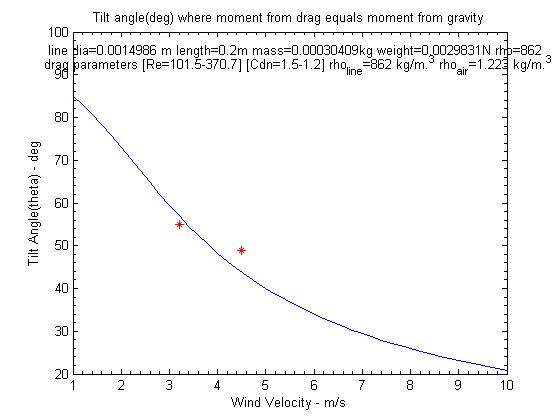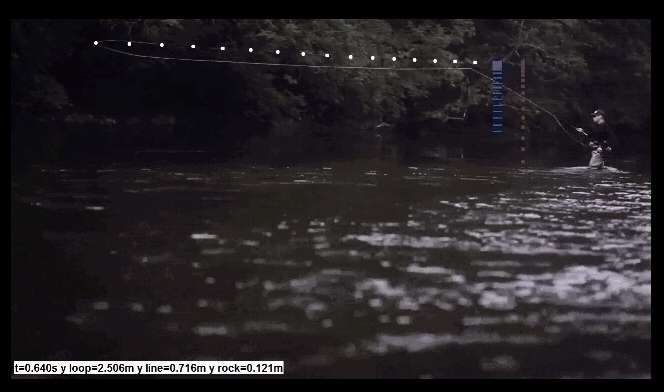Torsten,You just can't apply the illustration in my first posting directly to video analysis, a inclination does not mean lift force. The goal was first to quantify the resulting lift force for certain cases to get an impression if it's significant and I've made a table for some cases.
I guess you and I are the only one that sees this experiment as providing a solid validation of the lift theory.

Unlike Graeme's experiment with a sphere tied to a string where the tension in the string provided the opposing force to the x directed form drag on the sphere (that is a totally different experiment and thus the string tension plays an important role) this experiment is based on a torque balance on a distributed mass that has some length. In no way does Graeme's ball on a string experiment show that the lift on an inclined section of line going through the air comes from tension from the rod tip.Yes, at least we have a few data points and seem to be in the right range. Ideally we would measure line samples in a wind tunnel, but I'm guessing it's difficult with our resources?
The example of an upward angle on the rod leg where the tension from the rod is pulling down on the line should have been enough evidence (remember it only takes one counter example to disprove a theory) to show that does happen.

By putting the axis for the torque calculation at the tie point in the line, the tension in the line has no contribution to the torque since its moment arm is zero. Thus the torque balance is achieved when the +y directed force resulting from form drag on the string balances the downward force due to gravity and skin drag on the string. Thus this experiment shows that the drag theory fits with the actual results to within my ability to provide and measure the velocity of a uniform air-stream with the floor nozzle on a shop vacuum.
I am sure they would. Dimples on a baseball bat show it can be swung about 6-7% faster than a bat with a smooth surface. http://news.mit.edu/1994/bat-0302 I don't know how big the bumps (or dimples) would need to be and they would probably out dB a Sharkskin line.I'm wondering, if textured lines show different properties.
Gordy
